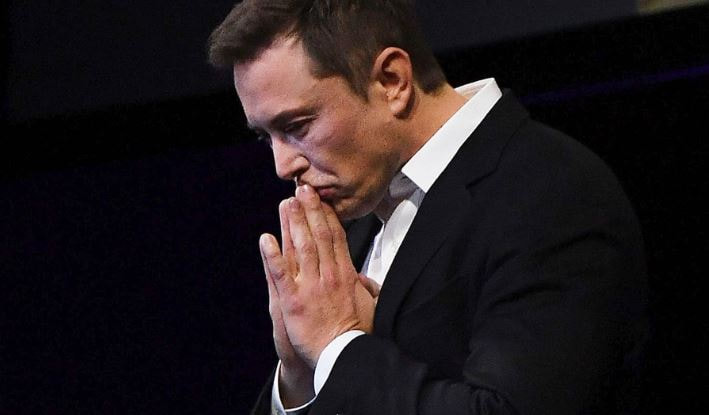Who is to blame? Every day, watching a marketing campaign that moves you is increasingly rare. A marketing campaign to drive the sales needle up must make you uncomfortable. Or, as I have always said to my teams and mentees, - "It has to make you move your butt on the couch," - and it doesn't matter if you got angry, sad, craving, infatuated, stunned, or happy. When reviewing to approve my company's ads, I often observe everyone's body language in the room during the first run. It reveals a lot to the trained eye. The problem today is that companies are unwilling to take risks, and young marketers do not have enough experience and face value to back up big bets with the correct data and reassuring argumentation. When did you last see big touching campaigns like the old Redbull, Pepsi-Cola, Oatly, Dove, or Apple iPod? (Dove is still a significant exception with Authenticity).
Some might blame the fragmentation of media channels. Others will blame the limiting digital media formats. All true, but they cannot hold the torch as the most important leading causes. One of the most untold and frequent reasons for all this "vanilla" marketing we have to consume is the lack of appetite from executives to provoke the audiences. It is true that in the age of activism and wokeness, it does not take much to spark fury from the crowds about many topics. Fears of backlash and product boycotts are real. Thus, they prefer to shy away and lower the tone or use less creative ways to the desperation of their creative directors. Many marketing executives have opted to brief their creative agencies with more conservative goals to adapt to this new reality. But truth be told, that lowers all campaigns' yield as visibility becomes harder to achieve. And being silent is counterproductive; at least half of Gen Zers, the group becoming the protagonist in marketing campaigns, believes companies must take a stance on social issues. That paradox is creating paralysis in many companies' marketing leaders. Also, in the Social Media and Search era, the rigid formats offered to advertisers tend to box them, giving less space for creativity. Even Super Bowl ads feel "expected" lately. Much money is spent on production, but we rarely can classify them as mind-bending. The next area to resort to is content. Companies are fleeing to produce better content to be more meaningful and valuable for their users. And I will tell you that this effort will also be a washout and ineffective. Marketing needs differentiation; when most companies do the same in marketing, it loses visibility. Now imagine that in the decade of Gen.AI and a flood of good enough content.
How are companies trying to solve the problem?
They have been increasing their marketing budget to compensate for lower efficiency. Marketing Spent as a percentage of revenue grew from 5% in 2011 to 8.7% in 2022 on average (as per Databox). And that is highly counterproductive. The more money you throw into media competition, the higher the price of the bids for the joy of the digital advertisement industry behemoths who score big time! And they will not hesitate to make the game's rules more complex, expensive, and unequal, harming the small guy. But that is a topic for another article. For the big guy, it will feel like feeding a machine that craves money. The more you throw in, the more it asks. And every time, fewer companies are big enough to negotiate with them, creating a dangerous asymmetry that needs regulation.
So what does it take?
The answer is simple. Talent, genuine talent. Marketers who deeply understand their clients and potential new ones. Marketers who are inspirational to move all areas in the company to deliver the promise. Marketers who are visionaries, experienced, influential, pragmatic, open-minded, connected, and caring leaders. Marketers with those skills can make miracles to the top line as customers flock to your services and products—marketing leaders who prepare their teams to excel and grow. Marketing leaders who generate so much revenue that their budgets feel small. Do you want to kill marketing mediocrity? Be honest about who is driving your brand and the empowerment you give.
Some might blame the fragmentation of media channels. Others will blame the limiting digital media formats. All true, but they cannot hold the torch as the most important leading causes. One of the most untold and frequent reasons for all this "vanilla" marketing we have to consume is the lack of appetite from executives to provoke the audiences. It is true that in the age of activism and wokeness, it does not take much to spark fury from the crowds about many topics. Fears of backlash and product boycotts are real. Thus, they prefer to shy away and lower the tone or use less creative ways to the desperation of their creative directors. Many marketing executives have opted to brief their creative agencies with more conservative goals to adapt to this new reality. But truth be told, that lowers all campaigns' yield as visibility becomes harder to achieve. And being silent is counterproductive; at least half of Gen Zers, the group becoming the protagonist in marketing campaigns, believes companies must take a stance on social issues. That paradox is creating paralysis in many companies' marketing leaders. Also, in the Social Media and Search era, the rigid formats offered to advertisers tend to box them, giving less space for creativity. Even Super Bowl ads feel "expected" lately. Much money is spent on production, but we rarely can classify them as mind-bending. The next area to resort to is content. Companies are fleeing to produce better content to be more meaningful and valuable for their users. And I will tell you that this effort will also be a washout and ineffective. Marketing needs differentiation; when most companies do the same in marketing, it loses visibility. Now imagine that in the decade of Gen.AI and a flood of good enough content.
How are companies trying to solve the problem?
They have been increasing their marketing budget to compensate for lower efficiency. Marketing Spent as a percentage of revenue grew from 5% in 2011 to 8.7% in 2022 on average (as per Databox). And that is highly counterproductive. The more money you throw into media competition, the higher the price of the bids for the joy of the digital advertisement industry behemoths who score big time! And they will not hesitate to make the game's rules more complex, expensive, and unequal, harming the small guy. But that is a topic for another article. For the big guy, it will feel like feeding a machine that craves money. The more you throw in, the more it asks. And every time, fewer companies are big enough to negotiate with them, creating a dangerous asymmetry that needs regulation.
So what does it take?
The answer is simple. Talent, genuine talent. Marketers who deeply understand their clients and potential new ones. Marketers who are inspirational to move all areas in the company to deliver the promise. Marketers who are visionaries, experienced, influential, pragmatic, open-minded, connected, and caring leaders. Marketers with those skills can make miracles to the top line as customers flock to your services and products—marketing leaders who prepare their teams to excel and grow. Marketing leaders who generate so much revenue that their budgets feel small. Do you want to kill marketing mediocrity? Be honest about who is driving your brand and the empowerment you give.




 RSS Feed
RSS Feed